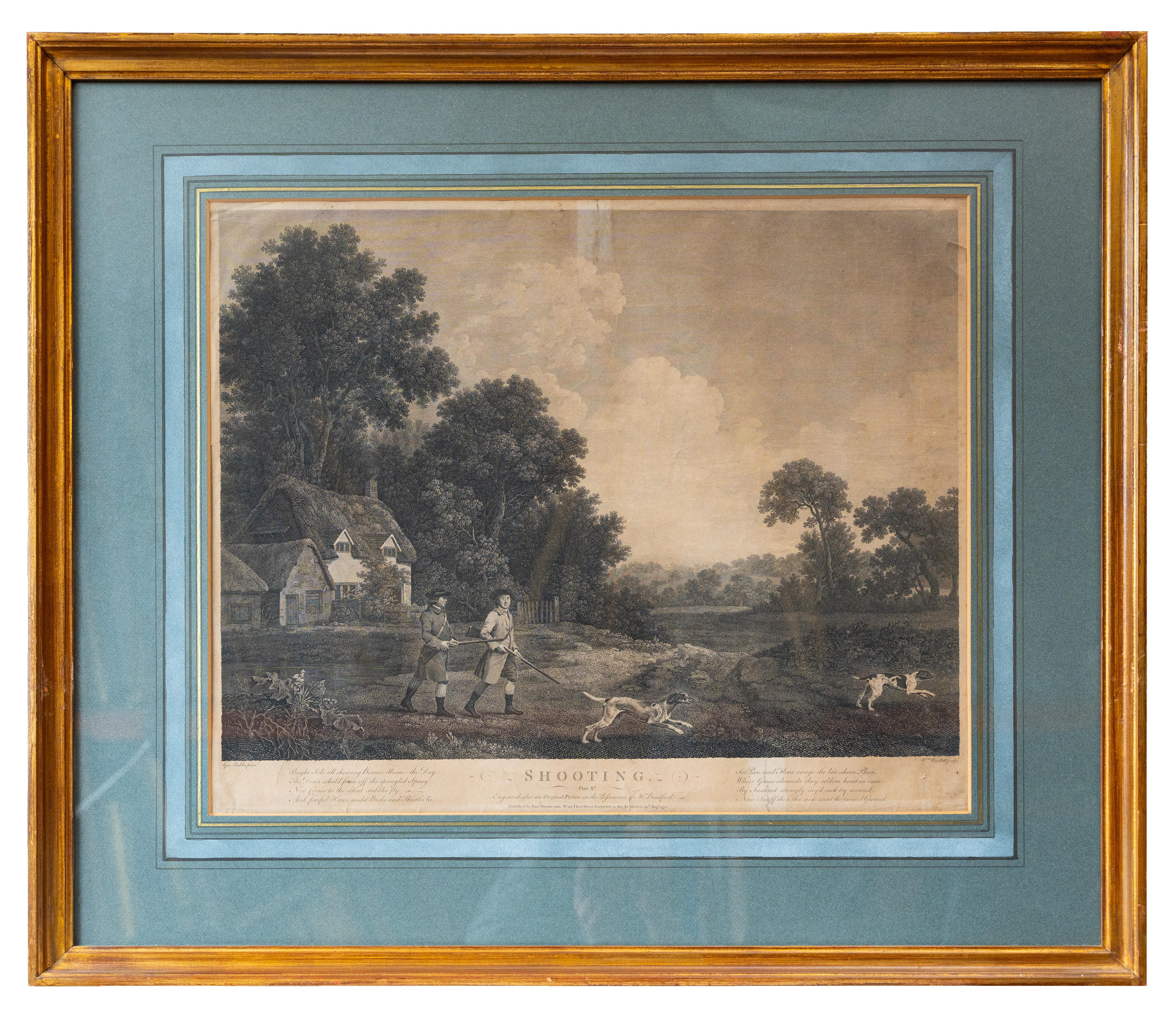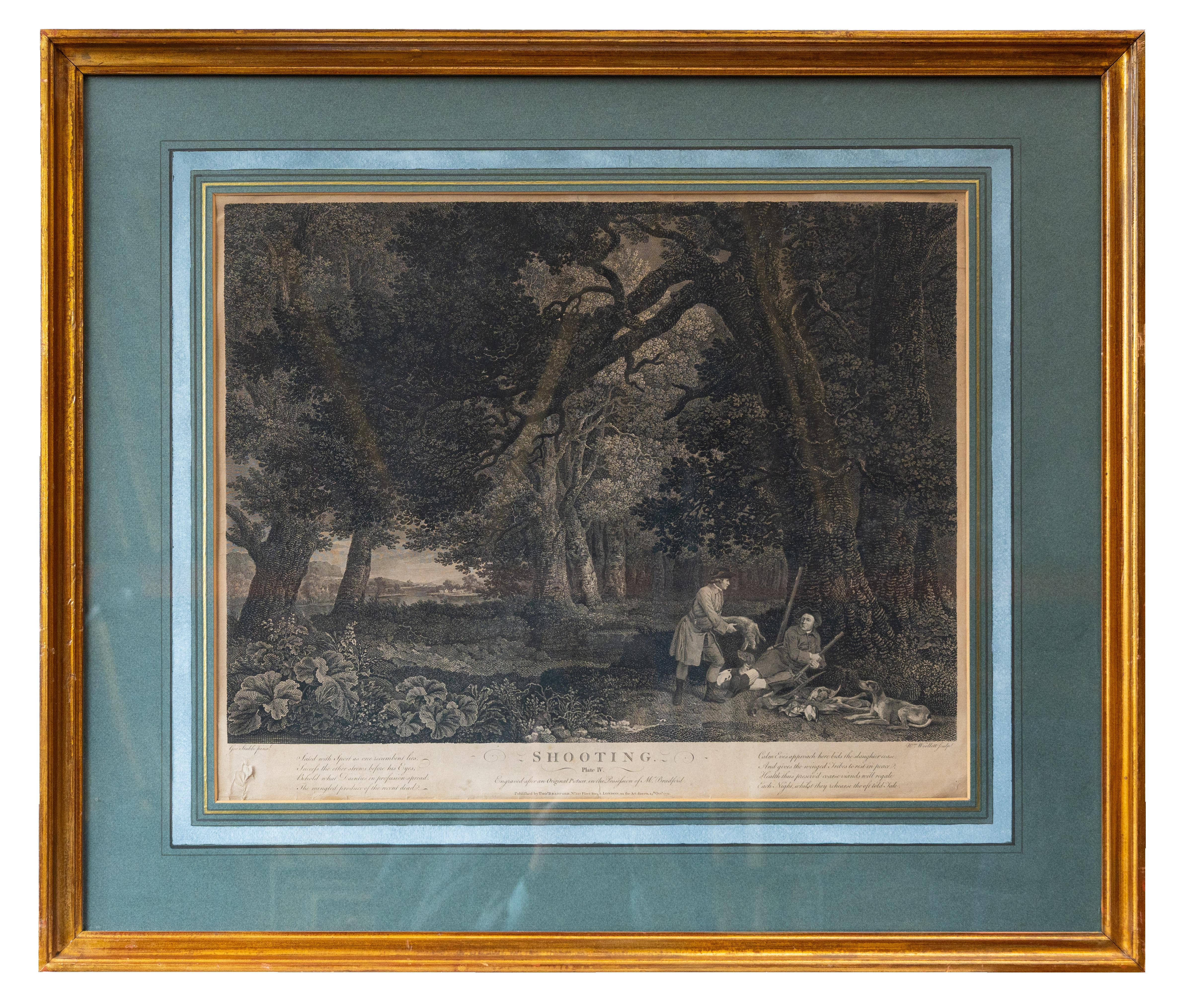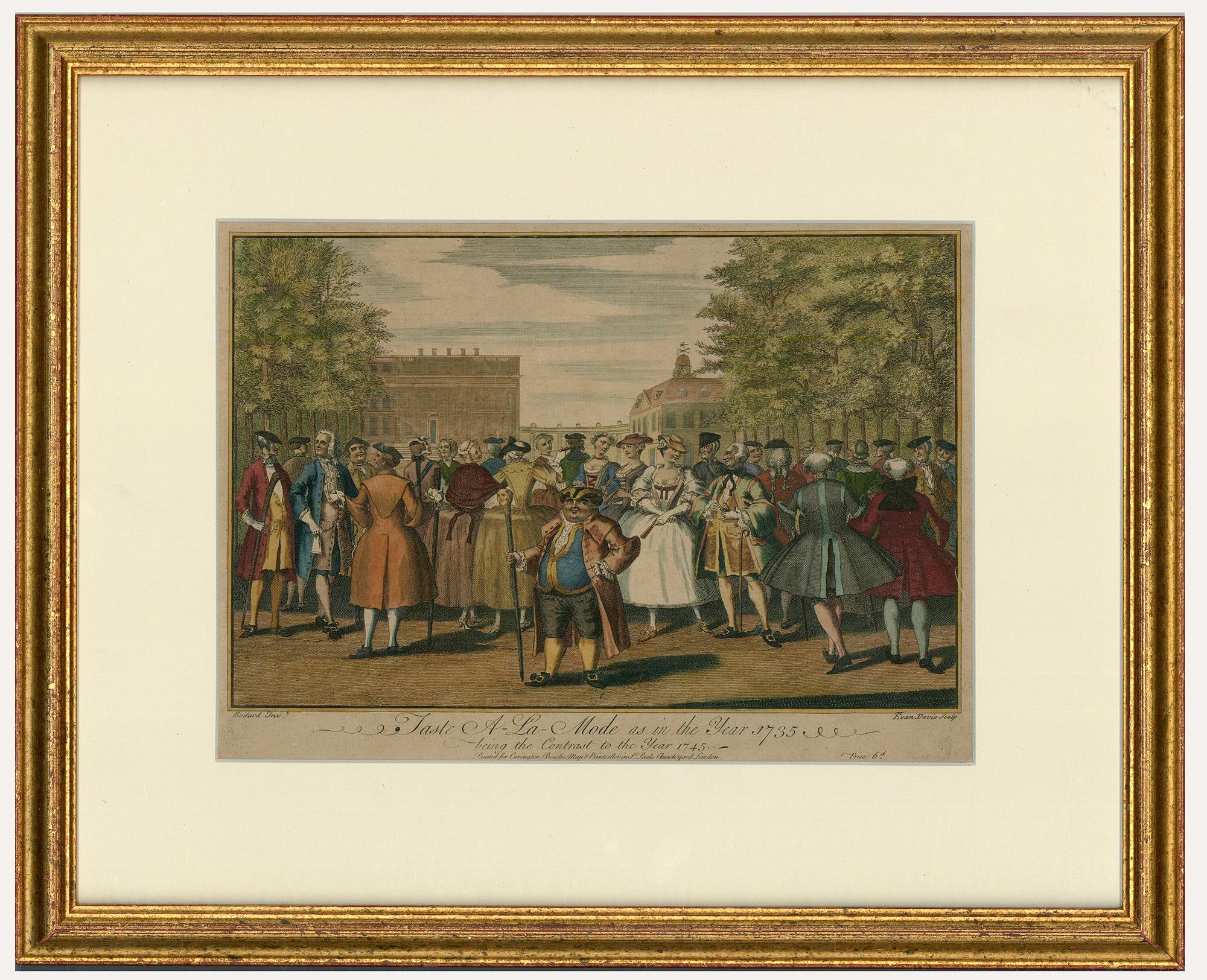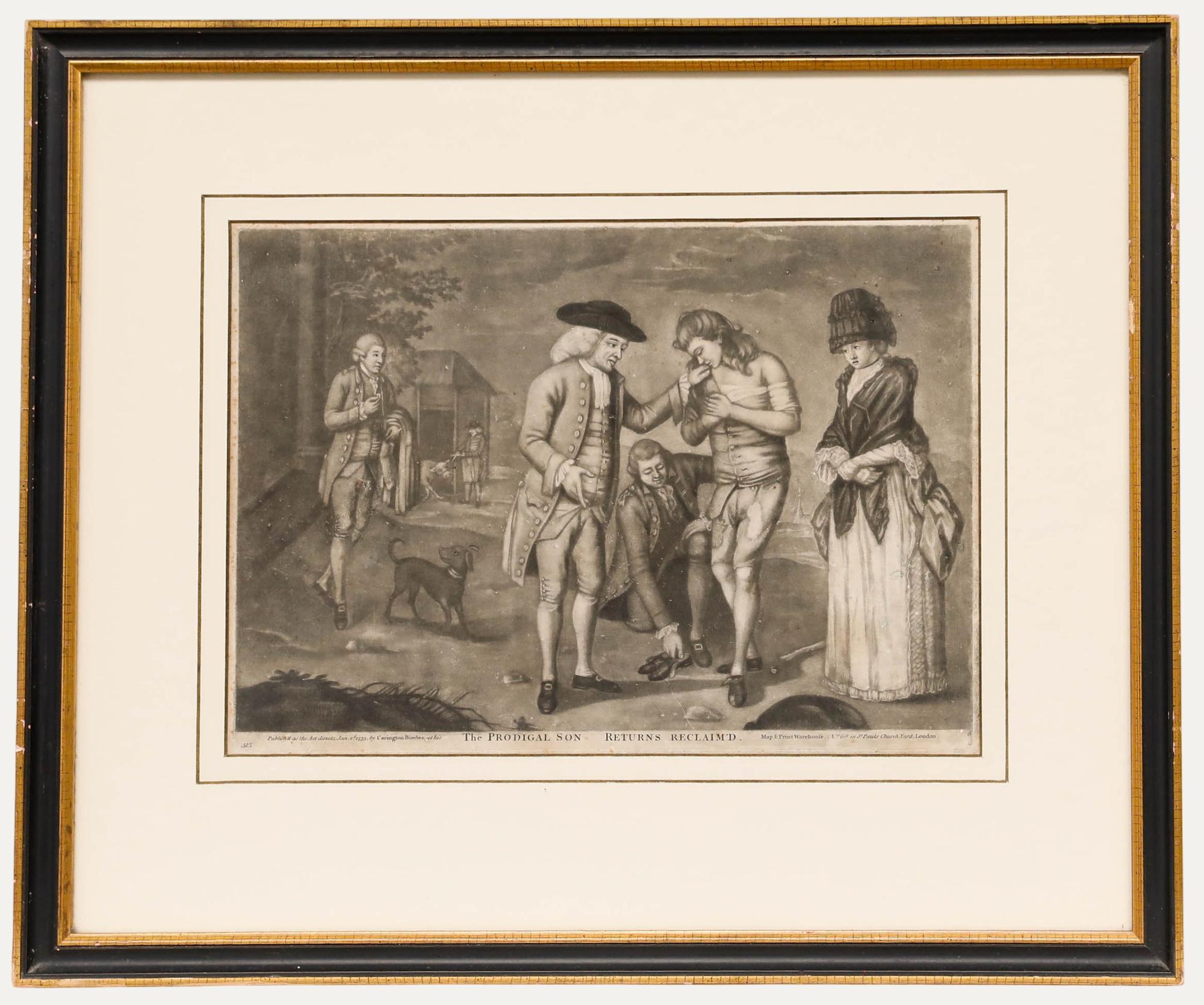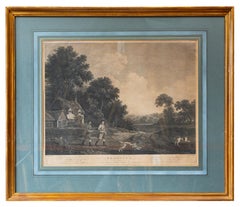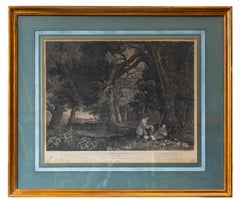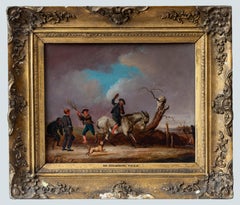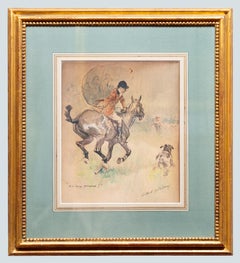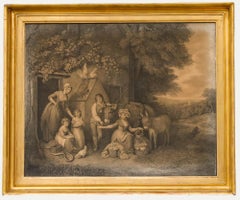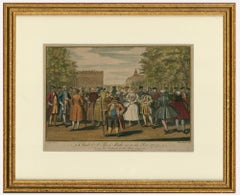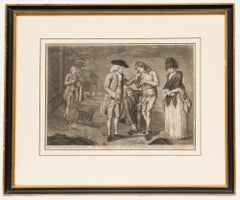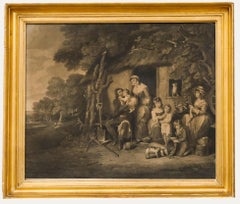Items Similar to "Shooting" after George Townley Stubbs
Want more images or videos?
Request additional images or videos from the seller
1 of 11
William Wollett"Shooting" after George Townley Stubbs1770
1770
$1,495.64
£1,100
€1,284.14
CA$2,070.81
A$2,250.62
CHF 1,206.13
MX$27,326.52
NOK 15,142.19
SEK 14,042.08
DKK 9,590.95
About the Item
William Woollett (1735–1785)
William Woollett was one of the most accomplished British engravers of the 18th century, renowned for his technical precision and his ability to translate the subtleties of painting into the language of print. Born in Maidstone, Kent, Woollett trained under John Tinney in London and quickly established himself as a master of landscape and historical engraving.
He became particularly celebrated for his engravings after works by artists such as Richard Wilson, Claude Lorrain, and Benjamin West — notably The Death of General Wolfe (after West), which became one of the most famous British prints of its age. Woollett’s exceptional skill in combining line engraving with etching allowed him to reproduce painterly effects of light, texture, and atmosphere with remarkable delicacy.
Elected an Associate Engraver of the Royal Academy in 1775, Woollett elevated the status of printmaking to that of a fine art. His works, characterized by technical brilliance and tonal richness, remain benchmarks of 18th-century British engraving.
George Stubbs (1724–1806)
George Stubbs is regarded as one of Britain’s greatest animal painters, celebrated for his scientific observation, anatomical accuracy, and artistic sensitivity. Born in Liverpool, he studied anatomy independently, dissecting horses to understand their musculature and structure — research that culminated in his celebrated publication The Anatomy of the Horse (1766).
Stubbs’s paintings combine precise anatomical understanding with poetic naturalism. He is best known for his depictions of horses — often commissioned by aristocratic patrons — but he also painted domestic animals, exotic creatures, and rural scenes. His art bridges Enlightenment empiricism and 18th-century aesthetics, transforming animal portraiture into a genre of intellectual and emotional depth.
Stubbs’s collaborations with engravers such as William Woollett helped disseminate his work to a broader audience. His paintings, whether of sporting scenes or quiet animal studies, reveal a profound respect for the living world, rendered with clarity, balance, and dignity.
Engraved by William Woollett after an original picture by George Stubbs in the possession of Mr. Bradford
Published c. 1770
Shooting forms the third plate in the celebrated series of four sporting subjects — Hunting, Shooting, Fishing, and Coursing — engraved by William Woollett after paintings by George Stubbs.
The composition presents a moment of poised action in the English countryside. Two sportsmen, finely dressed in mid-18th-century hunting attire, stand to the right, one raising his gun as a covey of birds takes flight across a wooded clearing. In the left foreground, a pointer dog springs forward, tense and alert, its muscular form rendered with Stubbs’s characteristic anatomical precision.
The landscape opens beyond into rolling fields, softly defined trees, and a luminous sky — a carefully balanced harmony between human activity and natural calm. Woollett’s engraving captures these subtleties with exceptional finesse: his use of delicate cross-hatching, atmospheric shading, and fine linear modulation conveys both the immediacy of motion and the serenity of the setting.
The inscription, noting that the work was “Engraved after an Original Picture in the possession of Mr. Bradford,” affirms the print’s direct lineage from Stubbs’s original painting, linking the image to its early provenance and contemporary patronage.
This print embodies the ideals of Georgian sporting art — elegant leisure, composure, and respect for nature — while demonstrating the fruitful collaboration between Stubbs’s painterly observation and Woollett’s masterful technique. Together, they created a quintessential image of rural sport that remains both a technical and artistic triumph of 18th-century British printmaking.
Writing in the engraving:
Recto, bottom left image edge: Geo stubbs pinxt
Recto, bottom right image edge: Wm Woollett Sculpt
Recto, bottom left: A gentle Gate that blows along the Land / The Game betrays; the Dog’s they Draw, they stand: / search all the objects that afford delight, / There’s none like this can please the Fowlers sight
Recto, bottom center: SHOOTING / Plate IIId / Engraved after an Original Picture in the possession of Mr Bradford / Published by Thos BRADFORD No B2 Fleet Street LONDON; as the Act directs 30th Sep 1770
Recto, bottom right: Softly they step expecting instant sport / The covey springs to find some safe resort; / like lightning flys the shot, one falls to the Ground, / The rest well mark’d, again are to be found
Provenance:
Ston Easton House
Measurements without frame:
43 x 54 cm
- Creator:William Wollett (1735 - 1785, British)
- Creation Year:1770
- Dimensions:Height: 26.38 in (67 cm)Width: 31.11 in (79 cm)
- Medium:
- Movement & Style:
- Period:
- Condition:
- Gallery Location:GB
- Reference Number:Seller: 601stDibs: LU2841217057282
About the Seller
5.0
Vetted Professional Seller
Every seller passes strict standards for authenticity and reliability
1stDibs seller since 2025
10 sales on 1stDibs
Typical response time: 8 hours
- ShippingRetrieving quote...Shipping from: United Kingdom
- Return Policy
More From This Seller
View All"Shooting" after George Stubbs
Located in GB
William Woollett (1735–1785)
William Woollett was one of the most accomplished British engravers of the 18th century, renowned for his precision and his ability to capture the paint...
Category
Late 18th Century Academic Figurative Prints
Materials
Engraving
"Shooting" after George Stubbs
By William Woollett
Located in GB
William Woollett (1735–1785)
William Woollett was one of the most accomplished British engravers of the 18th century, renowned for his precision and his ability to capture the paint...
Category
Late 18th Century Figurative Prints
Materials
Engraving
Children playing with a donkey
By George Harvey
Located in GB
Sir George Harvey was a prominent Scottish painter, born on 1 February 1806 in St Ninians (now Stirling), the son of a watchmaker. Although he initially apprenticed as a bookseller i...
Category
19th Century English School Figurative Paintings
Materials
Oil, Board
Hunting scene
By Gilbert Holiday
Located in GB
Whipping in Watercolour and graphite on paper depicting the hunt master bringing a hound home, by Charles Gilbert Joseph Holiday (British, 1879-1937).
Category
20th Century Modern Animal Drawings and Watercolors
Materials
Paper, Watercolor
$3,589 Sale Price
20% Off
Man after a donkey, English School 19th century
Located in GB
Painted in a charming naïve style, this work captures a rustic domestic scene set in the English countryside. At the heart of the composition is a cottage, its doorway animated by a ...
Category
19th Century Landscape Paintings
Materials
Canvas, Oil
Wooded landscape
Located in GB
John Berney Crome (1794–1842) was a notable English landscape painter associated with the Norwich School of painters, an influential regional art movement in 19th-century England. He...
Category
19th Century Victorian Landscape Paintings
Materials
Oil, Panel
You May Also Like
William Nutter after W.R. Bigg - Stipple Engraving, Favourite Chickens
Located in Corsham, GB
Two young children bid farewell to chickens destined for market in this charming rural scene by William Nutter (1759-1802) after William Redmore Bigg RA (1755-1828). Well presented i...
Category
Early 18th Century Figurative Prints
Materials
Engraving
Evan Davis (fl.1735-1745) - 18th Century Engraving, Taste A-La Mode 1735
Located in Corsham, GB
A hand coloured engraving depicting the fashions of 1735. Well presented in a gilt effect frame. Signed in plate. On laid paper.
Category
Early 18th Century Figurative Prints
Materials
Engraving
$268 Sale Price
20% Off
After Carington Bowles - 18th Century Engraving, The Prodigal Son Returns
Located in Corsham, GB
A charming engraving depicting the parable of the Prodigal Son in the Bible, found in Luke 15:11-32, after the original painting by Carington Bowles. Inscribed in plate. Presented in...
Category
Early 18th Century Figurative Prints
Materials
Engraving
William Nutter after William Redmore Bigg - Stipple Engraving, Saturday Evening
Located in Corsham, GB
A father greets his family after a day of labour in this charming rural scene by William Nutter (1759-1802) after William Redmore Bigg RA (1755-1828). Well presented in a gilt-effect...
Category
Early 18th Century Figurative Prints
Materials
Engraving
Whoever Makes A Design Without the knowledge of Perspective
By William Hogarth
Located in Bournemouth, Dorset
William Hogarth was an English painter and engraver, the outstanding British artist of his period. During his childhood, his father, a schoolteacher, was imprisoned for debt, and th...
Category
1830s Figurative Prints
Materials
Engraving
$184 Sale Price
20% Off
Pierre François Beaumont (1719-1777) - 18th Century Engraving, Hunting Delay
Located in Corsham, GB
Pierre François Beaumont (1719-1777) after Philips Wouwerman (1619-1668). Inscribed in French in the plate. Presented in a black veneer frame with a verre églomisé mount. On paper.
Category
18th Century Figurative Prints
Materials
Engraving
